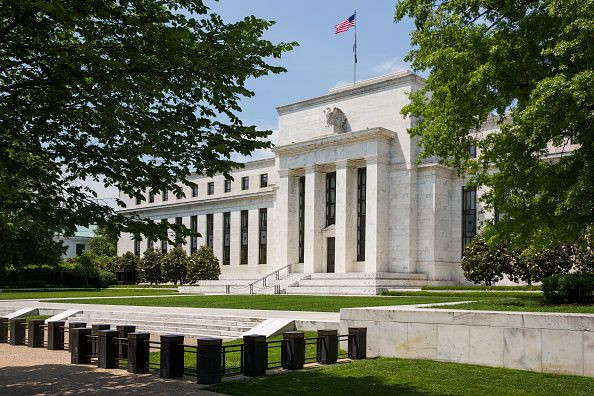After Nine Years Of US Recovery, Fed Sheds Anxieties

The Federal Reserve is guiding a U.S. economy that is as close to ideal as it could have dreamed a decade ago, when the darkest days of the recession forced it to take big risks to protect workers, banks and economies around the world from further devastation.
After nine years of steady if uneven recovery, the United States is now growing at a pace topping 4 percent, unemployment is as low as it has been this century, and inflation has safely edged up toward an official target.
While a few items remain on the U.S. central bank's wish list, such as bigger gains in wages and productivity, the main goals of stable prices and full employment are effectively met.
The nightmares that long haunted both hawks and doves have not come to pass, even as the Fed held interest rates near zero for years and snapped up some $3.5 trillion in bonds in an extraordinary effort to boost the recovery. Prices did not spike in response to the immense monetary stimulus, nor has the job market cooled since 2015 when the Fed began tightening policy.
The rate hike on Wednesday was the seventh in this cycle and effectively marked a shift to a neutral stance in which the policy rate matches inflation at just under 2 percent, leaving zero "real" accommodation.
"The Fed deserves tremendous credit for steering the economy to calmer waters, supporting what is likely to be the longest expansion in U.S. history while meeting inflation and employment objectives," said Stephen Gallagher, chief U.S. economist at Societe Generale. "Fiscal policy played a role during the crisis, but monetary policy was at the forefront."
Fed Chair Jerome Powell underscored his own satisfaction with the recovery in his remarks on Wednesday, saying the economy was in "great shape" and even going so far as to hint that he no longer feels constrained by the Janet Yellen-era fear of slipping back to zero interest rates.
"I think we are far enough away now though that the risks are kind of balanced," he said. "I think it's more just, we are just looking at the economy and what does it need and how do we sustain the expansion, keep the labor market strong and try to keep inflation near 2 percent."
The current economic expansion is the second-longest in U.S. history, and will set a record if it lasts a bit more than a year longer.
At least on the immediate horizon, little appears to stand in the way, given the government's $1.8 trillion in combined tax cuts and planned spending. It is not until the stimulus starts to fade in late 2019 to mid-2020 that a recession is likely, according to half of the respondents to a National Association of Business Economics survey.
Fed Governor Lael Brainard, among the most dovish policymakers least anxious to tighten, said on May 31 "the sizable fiscal stimulus that is in train is likely to provide a tailwind to growth in the second half of the year and beyond."
To be sure, the Fed is not inclined to hike rates any more than gradually after years of mostly over-optimistic predictions for inflation and economic growth, and disappointing wage gains of around 2.5 percent annually. Another reason for caution is the White House's threats of more tariffs, including on its closest allies, raising questions over how international trade will affect growth.
But for now, the Atlanta Fed estimates the U.S. economy is roaring at a 4.6 percent rate, a level it reached only twice since the recession. Economists generally expect growth to remain above 3 percent through year end, while Fed policymakers raised their forecast a touch to 2.8 percent on Wednesday.
That is a welcome step-up from the roughly 2-percent growth averaged throughout the recovery, which was plagued by a series of crises abroad and uncertainties at home, delaying the Fed's tightening plans.
Job growth has consistently outperformed in recent years, driving unemployment down to 3.8 percent in May, the lowest reading since 2000. Unemployment soared to 10 percent in 2009 and some 8.5 million jobs were lost during the recession that set off a global downturn and financial crisis.
Fast-forward to April of this year when data showed that U.S. job openings jumped to a record high, far outpacing hiring. "This is the most lopsided, mismatched labor market in the nation's history," said Chris Rupkey, chief financial economist at MUFG Union Bank. "The labor market is on fire."
Reuters
Editing by Andrea Ricci and Rosalba O'Brien
© Copyright Thomson Reuters 2024. All rights reserved.





















